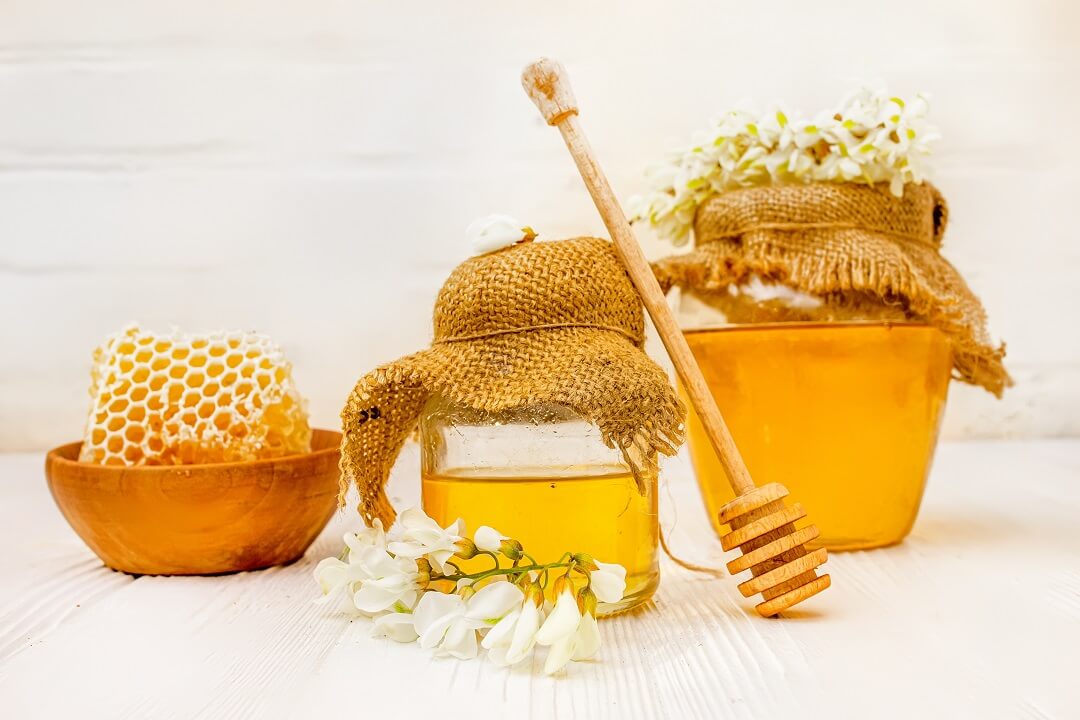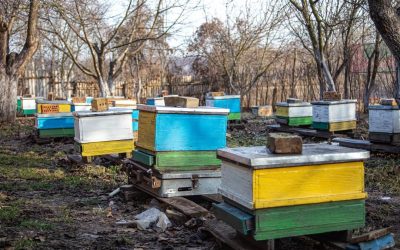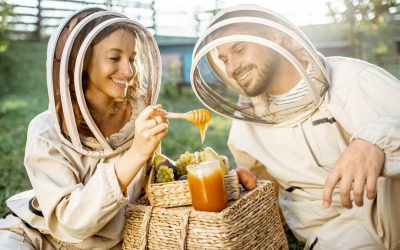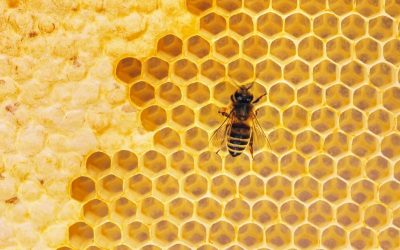Honey production is an essential aspect of beekeeping, as it provides a source of income for many beekeepers and is a valuable source of nutrition for humans and other animals. As the demand for honey continues to increase, beekeepers need to have a clear understanding of how to maximize their honey yield. In this article, we provide expert tips and strategies for getting the most out of your beehive and maximizing your honey yield.
Whether you are a seasoned beekeeper or just starting out, the information in this article will help you understand the role of the beehive in honey production and how you can get your bees to make more honey. From understanding the importance of providing a balanced diet to your bees, to ensuring your beehive is properly maintained, we cover everything you need to know to achieve optimal honey production.
So, if you’re ready to get the most out of your beehive, keep reading and learn how to maximize your honey yield!
Key takeaways
- Understanding the life cycle of honey bees and their behavior is crucial to maximizing honey yield.
- Environmental factors, such as weather, pollen availability, and pest pressure, can impact honey production.
- Proper beekeeping practices, including providing food, water, and supplemental nutrition, and maintaining proper ventilation and insulation, can increase honey yield.
- Monitoring for pests and diseases, and implementing preventative measures, are necessary for maintaining a healthy beehive.
- Choosing the right beehive and equipment, and using management techniques such as queen-rearing and splitting colonies, can further enhance honey production.
Understanding the Honey Bee and its Life Cycle
Honeybees are fascinating creatures that are essential for the production of honey and the pollination of crops.
Understanding the anatomy, behavior, and life cycle of honey bees is crucial for maximizing honey yield and ensuring the health and well-being of the beehive.
This section will provide an overview of the different aspects of the honey bee and its life cycle, including the anatomy of the bee, its behavior, and the different roles of worker bees. With this knowledge, you’ll be able to make informed decisions about beekeeping and maximizing honey production.
Anatomy and Behavior of Honey Bees
Honey bees are fascinating creatures that play a critical role in the production of honey and the pollination of plants. These social insects live in large colonies and are divided into three distinct castes: the queen, workers, and drones. The queen is responsible for laying eggs and maintaining the colony, while workers are responsible for gathering nectar and pollen, caring for the young, and building the comb. Drones, on the other hand, are responsible for mating with the queen.
Understanding the Life Cycle of Honey Bees in Maximizing Honey Production
To maximize honey production, it’s important to understand the life cycle of honey bees. This includes the different stages of development, such as the egg, larval, pupal, and adult stages. Additionally, you should have a good understanding of the different activities that occur within the colony during each stage of development, as well as the role that each caste plays. For example, worker bees are responsible for collecting nectar from flowers and transforming it into honey, which is stored in the comb for later use.
Different Roles of Worker Bees and How They Contribute to Honey Production
Worker bees are the backbone of the colony and are responsible for a variety of tasks that contribute to honey production. These tasks include foraging for nectar and pollen, caring for the young, and building the comb. When a worker bee collects nectar, she stores it in a special sac in her body. Once she returns to the colony, she regurgitates the nectar and begins the process of transforming it into honey. This is done by adding enzymes that break down the sugars in the nectar, which helps to preserve the honey and make it easier to store. Worker bees also play a critical role in maintaining the health of the colony by performing tasks such as cleaning and ventilation, as well as defending the colony from predators.
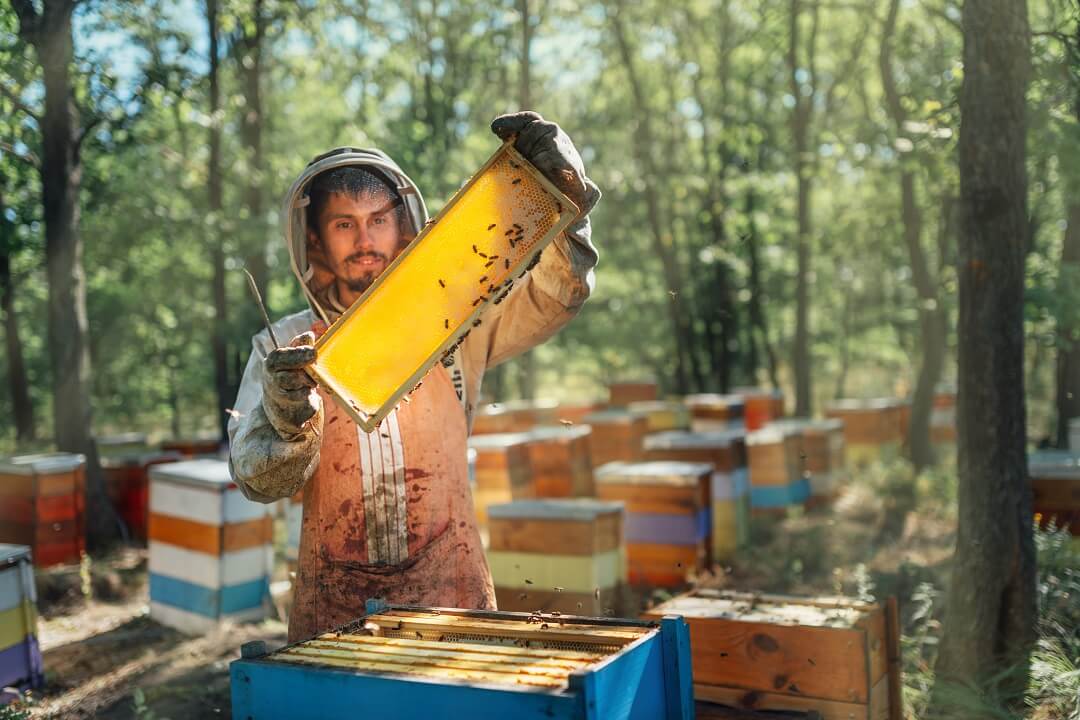
Factors Affecting Honey Yield
In order to maximize honey yield, it is important to understand the various factors that can impact production. From changes in weather to disease and parasites, there are a number of environmental and biological elements that beekeepers must be aware of.
In this section, we will take an in-depth look at these factors and explore their impact on honey yield. By doing so, we will gain a better understanding of what beekeepers can do to maximize the production of honey in their hives.
Environmental Factors
Environmental factors play a significant role in determining the honey yield of a beehive. Understanding the impact of weather, pollen availability, and pest pressure on honey production is crucial for maximizing honey yield.
Weather
Weather patterns, such as temperature, humidity, and precipitation, can directly impact the health and productivity of honey bees. During hot and dry weather, for instance, honey bees may struggle to find water, which is essential for maintaining their colony. Similarly, cold and wet weather can make it difficult for bees to access the nectar they need to produce honey.
Pollen Availability
Pollen availability is also a key factor in honey production. Honey bees rely on pollen as a protein source to feed their larvae, and a lack of pollen can negatively impact the growth and survival of the colony. Additionally, if the surrounding environment is lacking in flower sources, the honey bees may struggle to collect enough nectar to produce a substantial amount of honey.
Pest Pressure
Pests, such as mites, can also have a major impact on honey yield. Parasitic mites can feed on the blood of honey bees and weaken or kill them, reducing the strength of the colony and its ability to produce honey.
Disease and Parasites
Finally, disease and parasites can also significantly impact honey yield. Honey bees can fall victim to numerous diseases and parasites, such as the Varroa mite, Nosema, and American Foulbrood, which can weaken or kill individual bees and negatively impact the overall health and productivity of the colony. Understanding the impact of these factors is crucial for developing strategies to protect the health of the colony and maximize honey yield.
Best Practices for Maximizing Honey Yield
Maximizing honey yield is the ultimate goal for any beekeeper. With the right knowledge and techniques, you can ensure that your bees are healthy and productive, resulting in a bountiful harvest of delicious honey.
In this section, we will explore the best practices for maximizing honey yield, including essential beekeeping practices, providing proper nutrition and hydration, and maintaining a well-ventilated and insulated beehive. Whether you’re just starting out or have been beekeeping for years, these tips will help you maximize the honey yield from your beehives.
Providing Sufficient Food and Water
One of the most important things you can do for your bees is to ensure that they have access to enough food and water. Bees need nectar and pollen to produce honey, so it’s essential to provide these resources in sufficient quantities. If there is a shortage of food in the area, you may need to provide supplemental nutrition, such as sugar water or high-protein feed, to help your bees maintain their strength and energy levels.
Supplementing Nutrition
In addition to providing food and water, you may also want to consider supplementing your bees’ diet with additional nutrients. There are various bee feed supplements available that are designed to provide bees with the nutrients they need to produce more honey. When providing supplemental nutrition, it’s important to follow the manufacturer’s instructions carefully to ensure that you are providing the right balance of nutrients to your bees.
Proper Ventilation and Insulation
Finally, proper ventilation and insulation are also critical to maximizing honey yield. Bees need a steady supply of fresh air to maintain their health, and the beehive should be well-ventilated to provide this. Additionally, the beehive should be properly insulated to help regulate the temperature inside, which is important for the health and productivity of your bees. By providing the right conditions for your bees, you can help to ensure that they are able to produce as much honey as possible.
Managing Pests and Diseases in the Beehive
Honeybees play a critical role in pollinating crops, and therefore in our food supply. The importance of managing pests and diseases in the beehive cannot be overstated. They not only impact the health of the colony, but also reduce honey production, and if left unchecked, can spread to other hives. In this section, we will discuss the common pests and diseases that can impact honey yield and the measures that can be taken to minimize their impact.
Common pests and diseases that can impact honey yield
There are several common pests and diseases that can impact honeybees and reduce honey yield. Some of the most common pests include Varroa mites, Wax moths, and small hive beetles. Diseases like American Foulbrood and Nosema can also pose a threat to the health of the colony and reduce honey production. Understanding the biology and behavior of these pests and diseases is essential for effective management.
Preventative measures, such as screening bottom boards, in reducing pest and disease pressure
Preventative measures can play a crucial role in reducing the impact of pests and diseases on honeybees and honey production. Screening bottom boards, for example, can help reduce the population of Varroa mites by trapping them in the screened bottom. Additionally, regular inspections of the colony can help detect the presence of pests and diseases early, allowing for prompt action to be taken.
Monitoring for symptoms of pests and diseases and taking appropriate action
Monitoring for symptoms of pests and diseases is a critical part of managing them. Early detection of pests and diseases can help prevent widespread outbreaks and allow for prompt action to be taken. Taking appropriate action when necessary, such as treating colonies with approved chemicals or removing infected combs, can help prevent the spread of pests and diseases to other hives and reduce their impact on honey production.
Enhancing the Beehive for Maximum Honey Production
Beekeeping is an art that requires a delicate balance of knowledge and technique to achieve maximum honey production. In this section, we will explore the different ways to enhance the beehive for increased honey yield. From the type of beehive used to the equipment and management techniques, we will cover the various factors that can impact honey production and help you make informed decisions for your beekeeping operation.
Whether you’re just starting out or a seasoned pro, this section will provide valuable insights into the world of beekeeping and the science behind maximizing honey yield.
Overview of Different Types of Beehives
Beehives come in a variety of styles, each with its own unique features and advantages. Understanding the different types of beehives available and their impact on honey yield is an important part of maximizing honey production.
Importance of Using the Right Equipment
The right equipment, such as frames and boxes, plays a crucial role in supporting maximum honey production. Properly designed and maintained equipment can help to increase honey yields, as well as make it easier for beekeepers to manage their hives.
Benefits of Using Management Techniques
In addition to using the right equipment, beekeepers can also enhance their hives for maximum honey production through the use of management techniques such as queen-rearing and splitting colonies. These techniques can help to promote the growth and development of strong, productive colonies, resulting in increased honey yields.
Conclusion
In conclusion, maximizing honey yield is a critical aspect of beekeeping that requires a deep understanding of honey bees and their life cycle, as well as the factors that can impact their production.
By understanding the life cycle of honey bees, being aware of the environmental factors that can affect their health, and utilizing best practices for beekeeping, you can help your bees produce more honey. Furthermore, monitoring pests and diseases and making necessary adjustments, as well as enhancing the beehive, can also help increase honey yield.

